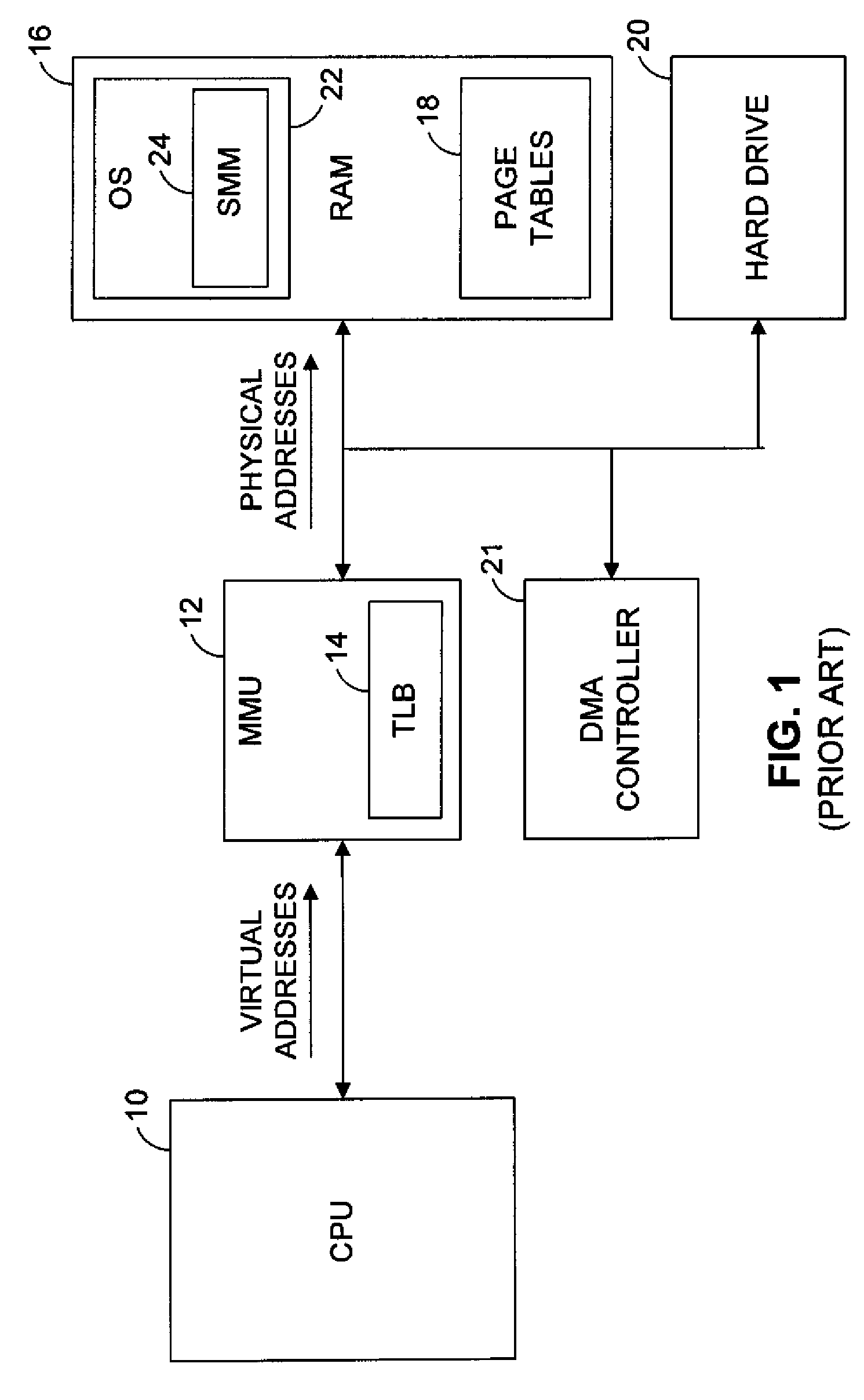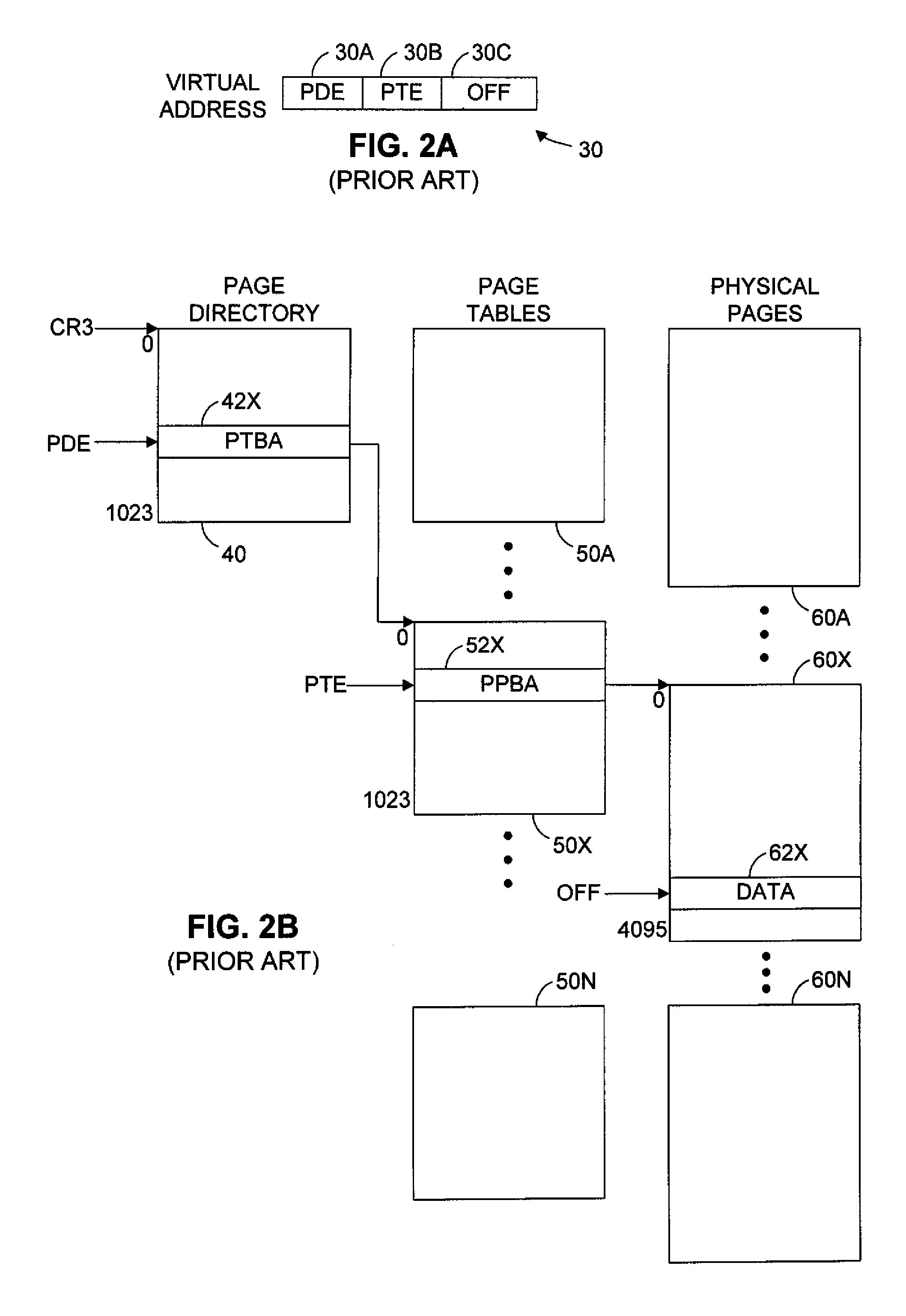Maintaining address translations during the software-based processing of instructions
a software-based processing and address technology, applied in the field of computer programs, can solve the problems of ram being relatively expensive in comparison to the cost of other data storage devices, virtual addresses cannot be directly applied to the ram b>16/b> in a virtual memory system, and the ram is often designed with a limited amount of ram
- Summary
- Abstract
- Description
- Claims
- Application Information
AI Technical Summary
Benefits of technology
Problems solved by technology
Method used
Image
Examples
Embodiment Construction
[0058]This invention may be implemented in a VMM for a multiprocessor system implementing a virtual memory system, or in other systems involving multiple logical or physical processors and the software-based processing of instructions. The invention will be described in connection with a VMM for a multiprocessor system. In this example, the system will be a symmetrical multiprocessing (SMP) system and the multiple processors will have the x86 architecture.
[0059]FIG. 5 is a functional block diagram of an SMP system 100 that includes a single VMM that exports a multiprocessor VM. The multiprocessor system 100 includes a first microprocessor or CPU 102A, a second microprocessor or CPU 102B, a shared primary memory 110, a shared secondary memory or disk drive 112 and a set of other devices 114, such as a monitor, keyboard, mouse, printer and network interface card. The first microprocessor 102A has a first hardware MMU 105A and a first hardware TLB 107A, while the second microprocessor ...
PUM
 Login to View More
Login to View More Abstract
Description
Claims
Application Information
 Login to View More
Login to View More - Generate Ideas
- Intellectual Property
- Life Sciences
- Materials
- Tech Scout
- Unparalleled Data Quality
- Higher Quality Content
- 60% Fewer Hallucinations
Browse by: Latest US Patents, China's latest patents, Technical Efficacy Thesaurus, Application Domain, Technology Topic, Popular Technical Reports.
© 2025 PatSnap. All rights reserved.Legal|Privacy policy|Modern Slavery Act Transparency Statement|Sitemap|About US| Contact US: help@patsnap.com



